inside the Akihisa Hirata exhibition
The Nerima Art Museum is hosting an exhibition showcasing the world of Japanese architect Akihisa Hirata. Throughout his career, Hirata has coined and used the term ‘karamarishiro’ to explain his architectural philosophy. Borrowing his words: ‘Unlike clearly defined spatial regions, [it] refers to the interwoven gaps that are like ‘fluffy interstices,’ essentially overlapping areas adjacent to all kinds of matter. This concept is not limited to the human world but also explores the potential for coexistence with a broader sense of life forms, including plants, animals, and cultures from different times and spaces. It is also an attempt to liberate humanity from the narrow definition of ‘human.” The exhibition is running at the museum until September 23, 2024.
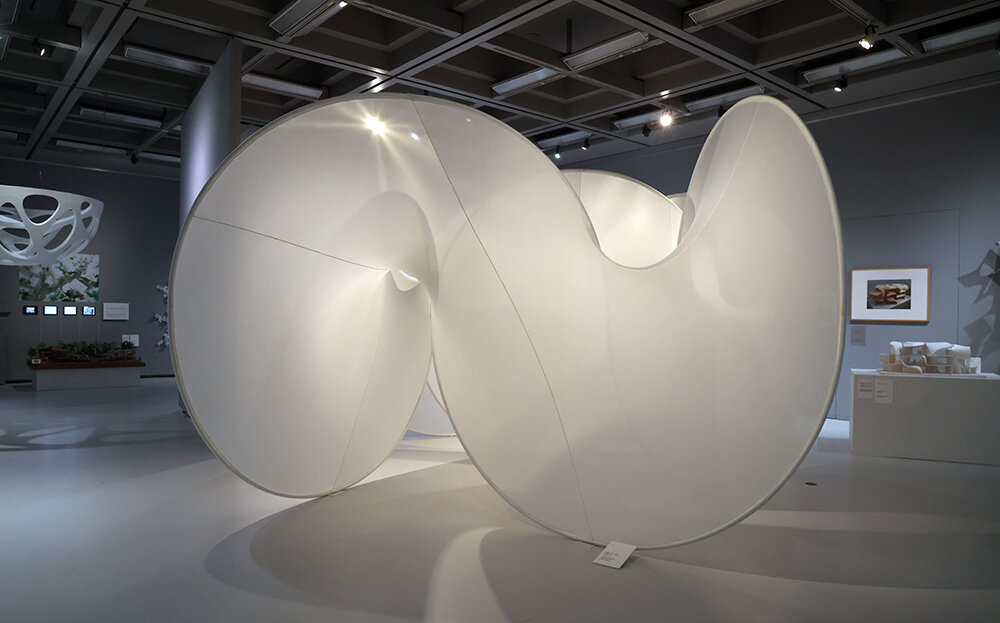
image © designboom
the philosphy of ‘karamarishiro’: humans meet nature
Akihisa Hirata’s focus is not solely on the human world. The scenes evoked from the natural world include flocks of birds perched on tree branches, clouds draping over the Alps, fish eggs clinging to seaweed, and intertwining plants. These scenes create countless surface areas and unexpected spaces through chance. Such natural imagery aids in shaping his architectural philosophy. As displayed throughout the Nerima Art Museum (see more here), the architect’s approach to the practice, which finds spatial qualities in the randomness of nature rather than in meticulously human-made structures, is one of the key elements of his work.
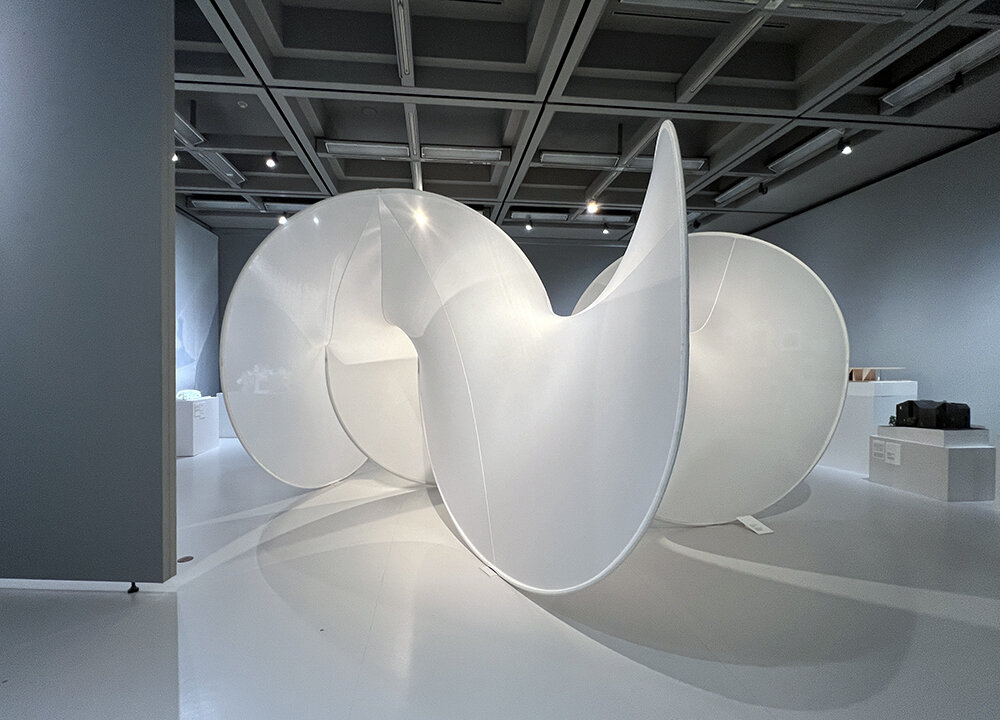
image © designboom
a three-part experience at nerima art museum
The Akihisa Hirata exhibition is structured into three sections, with a new term, ‘Hamachigiwa’ (where the waves meet the shore), as its central theme. The first section focuses on ‘karamarishiro,’ a concept that has been central to Hirata’s architecture, as explained earlier. The architecture of ‘karamarishiro’ emerges at the boundaries and intersections between humans and animals. The second and third sections explore the theme of ‘resonance.’ This may be akin to a sense of harmony—resonance among countless people’s thoughts, between past and present, or between here and distant places.
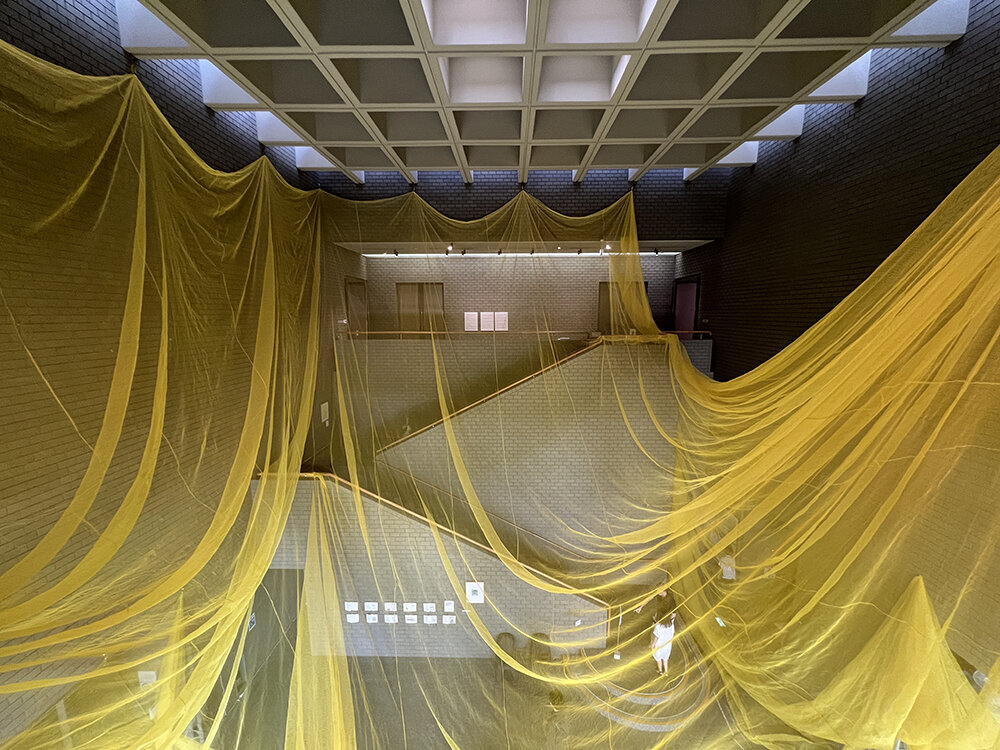
image © designboom
Architecture imbued with such ‘resonance’ hints at a different ‘human shoreline,’ one that expands our once familiar human consciousness beyond ‘karamarishiro.’ The exhibition will create a space where visitors can experientially understand the concept of ‘Hamachigiwa’ through sketches, models, and installations. It is a showcase that approaches the mental imagery of Akihisa Hirata, a philosophizing architect.
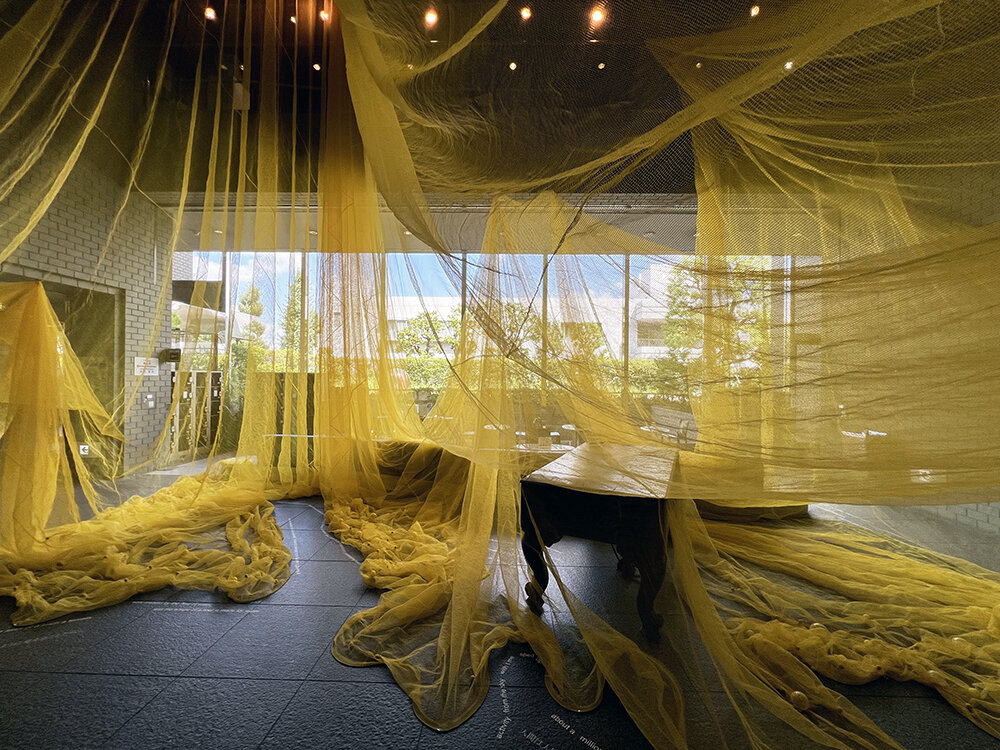
image © designboom
One of the public buildings that embody Hirata’s concepts is the Ota City Museum and Library (2017), which won the 2022 Architectural Institute of Japan Award. This building is beloved by the community as a landmark that realizes the idea of ‘karamarishiro,’ where various segmented spaces and the inside and outside intertwine. Hirata has also worked on multiple residential and commercial facilities, bringing to life spaces filled with originality that reflect his philosophical theories and admiration for nature and life.
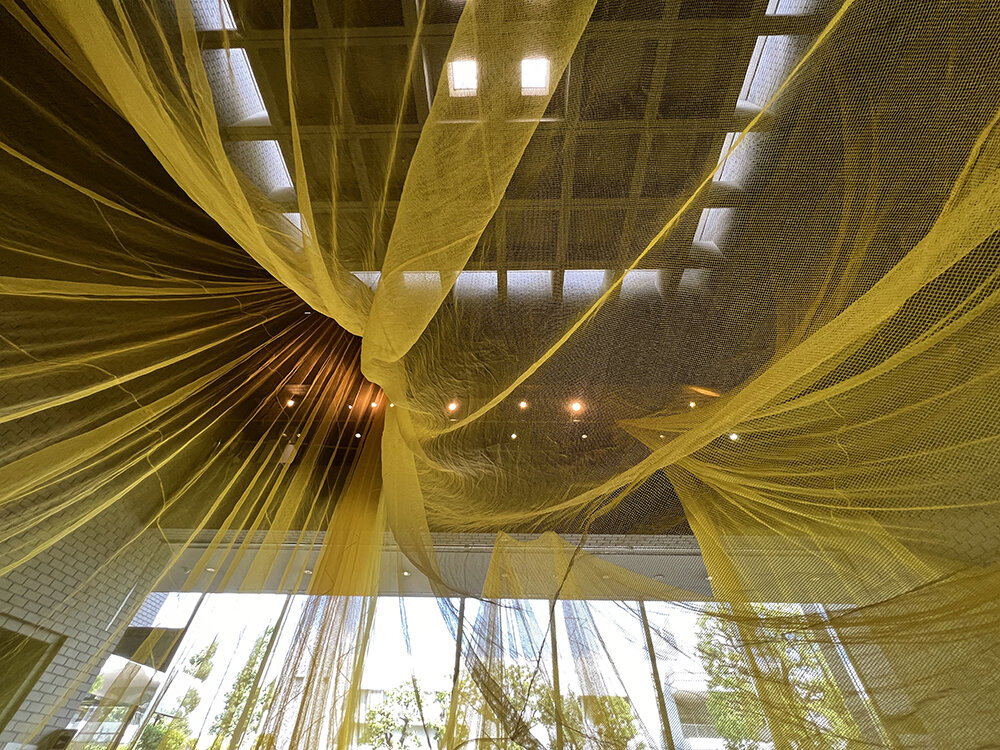
image © designboom
Now, the Nerima City Art Museum will join these representative architectural works. The museum will undergo a rebirth as a cultural complex integrated with a library, marking a new beginning. The architectural concept is ‘Fujizuka of the 21st Century / Cloud of Art / Mountain of Books.’ Inspired by the ‘Fujizuka’ mounds that have existed in Nerima for centuries, the new museum is envisioned as a place that connects art and books with the town and its people. ‘Through this exhibition, visitors will not only conceptually approach Hirata’s architectural philosophy but also glimpse the future potential encapsulated within his architectural works,’ concludes the museum.
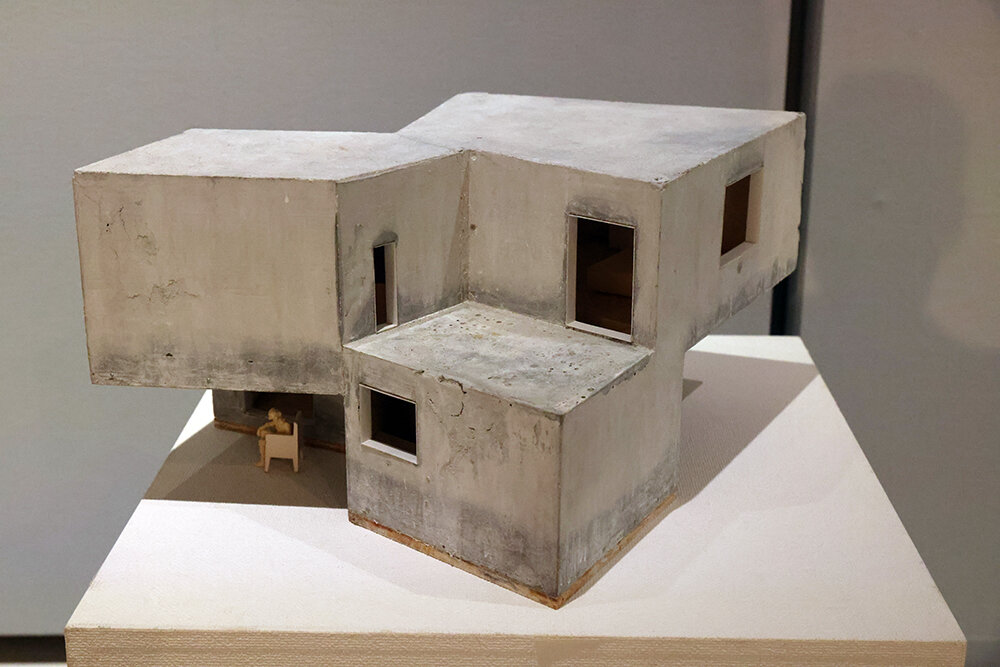
image © designboom
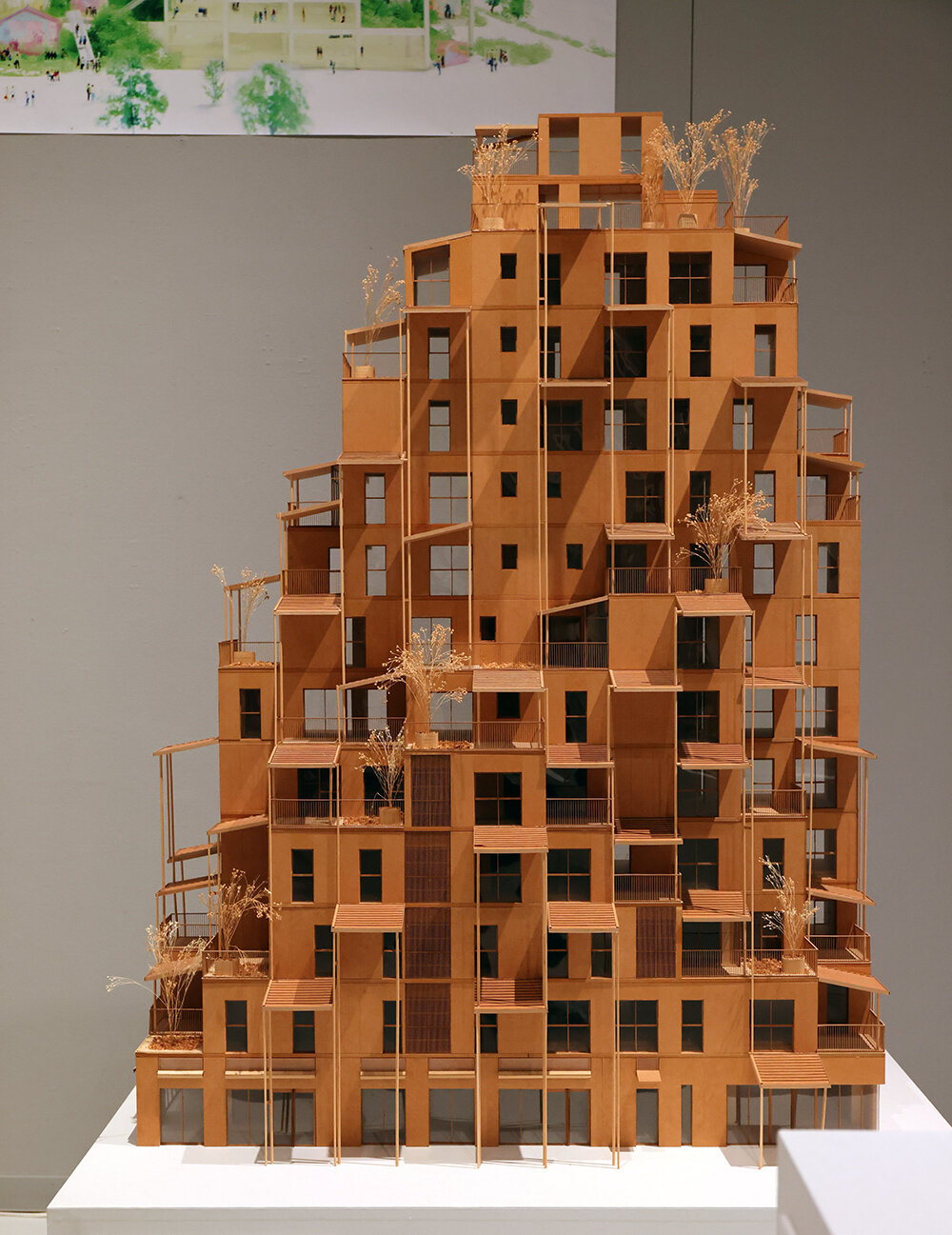
image © designboom
